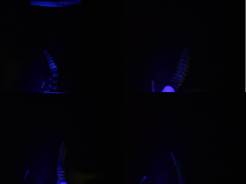I get the sense that many people feel as if science and scientists are in an ivory tower; that science is out of reach of most people because they don’t have the educational background or the quantitative skills typified by professional scientists. I think also that sometimes scientists disregard the ideas of non-scientists because they don’t have the educational background or quantitative skills most scientists have. I think that both of these notions are mistaken.
Science is a community endeavor. It benefits form discourse; the tossing around of ideas and interpretations by multiple people from many different backgrounds. Whether we admit it or not, all humans are bias. Our thought processes and interpretations of the natural world are the result of our prior experiences. Hence, science benefits from many different people eyeing up the same problems because what one person may see as an intractable problem or routine observation is seen as an easily solved problem or extraordinary phenomenon.
In an attempt to engage a wide community of people, both professional and non-professional in the human endeavor called science, below I describe a research project I am currently working on related to the ultraviolet fluorescence of the rattlesnake rattle. I will be presenting a poster of this very project a the 2nd Biology of the Pitvipers meeting in a few days. After the description, I provide a short URL to a form where you can leave your comments and suggestions about the scientific process in general and the fluorescence project, specifically. I ask that you use the URL instead of the comments section of this blog so that I have everyone’s comments in one place in a user-friendly format.
Ultraviolet Fluorescence of the Rattlesnake Rattle: Preliminary findings
All animals communicate within their own species and between species. For example honey bees do the waggle dance to tell other bees in which direction and how far to a plentiful food source. Rattlesnakes advertise their potentially harmful bite by rattling the rattle on their tail. Essentially, communication is the transfer of information from a sender to a receiver in which both parties benefit from the information exchange. In many cases it is helpful to send information in more than one sensory channel. For example some rattlesnakes use an auditory signal and a visual signal (some rattlesnakes have a conspicuously colored tail).
Fluorescence is a physical phenomenon in which light is emitted when the electrons of a substance are excited and change energy levels, whereby in the process photons are released. The late, great rattlesnake biologist Laurence Klauber noted over 50 years ago that the rattlesnake rattle fluorescences under ultraviolet light. No one has investigated the phenomenon since even though it is known that other animals utilize UV fluorescence, including parrots, many fish, and scorpions.
Our study had three objectives: 1) Develop methods to quantitatively assess rattle fluorescence, 2) Document interspecific variation in rattle fluorescence, if it exists, and 3) Test hypotheses regarding the function and biological role of rattle fluorescence.
To meet these objective we built a 3×3 UV-LED (395-400 nm) light array in a black box and photographed rattlesnake rattles. We utilized western diamondback and prairie rattlesnakes from the Northwestern Oklahoma State University Museum of Natural History. We then quantified the intensity of the fluorescence using computer software similar to Photoshop.
We found that Western diamondback rattlesnakes exhibit more intense fluorescence than prairie rattlesnakes.
We have come up with a few ideas about why this might be. First, it is possible that the fluorescence is a signal enhancer (that is how humans use fluorescence; that’s what Woolite and Tide do do to your clothes). We thought this might be related to differences in habitat use or activity in these species, but they use very similar habitats (at least in Oklahoma) and both are active at night (there is available UV at night, however). It is interesting to note that the Western diamondback has a banded tail which is also conspicuous.
Another possibility is that the fluorescence enhances the mimetic similarity between the rattle and segmented insects. Several species of rattlesnakes exhibit a behavior called caudal luring in which they wiggle their tails to lure food within striking distance. The video at this link is of copperheads luring, which are close relatives to rattlesnakes.
So, now is your chance to think like a scientist. Follow the link below to a Google form that will provide you an opportunity to record your thoughts on this research.
The form can be found here: http://goo.gl/vmGiXU

Leave a comment